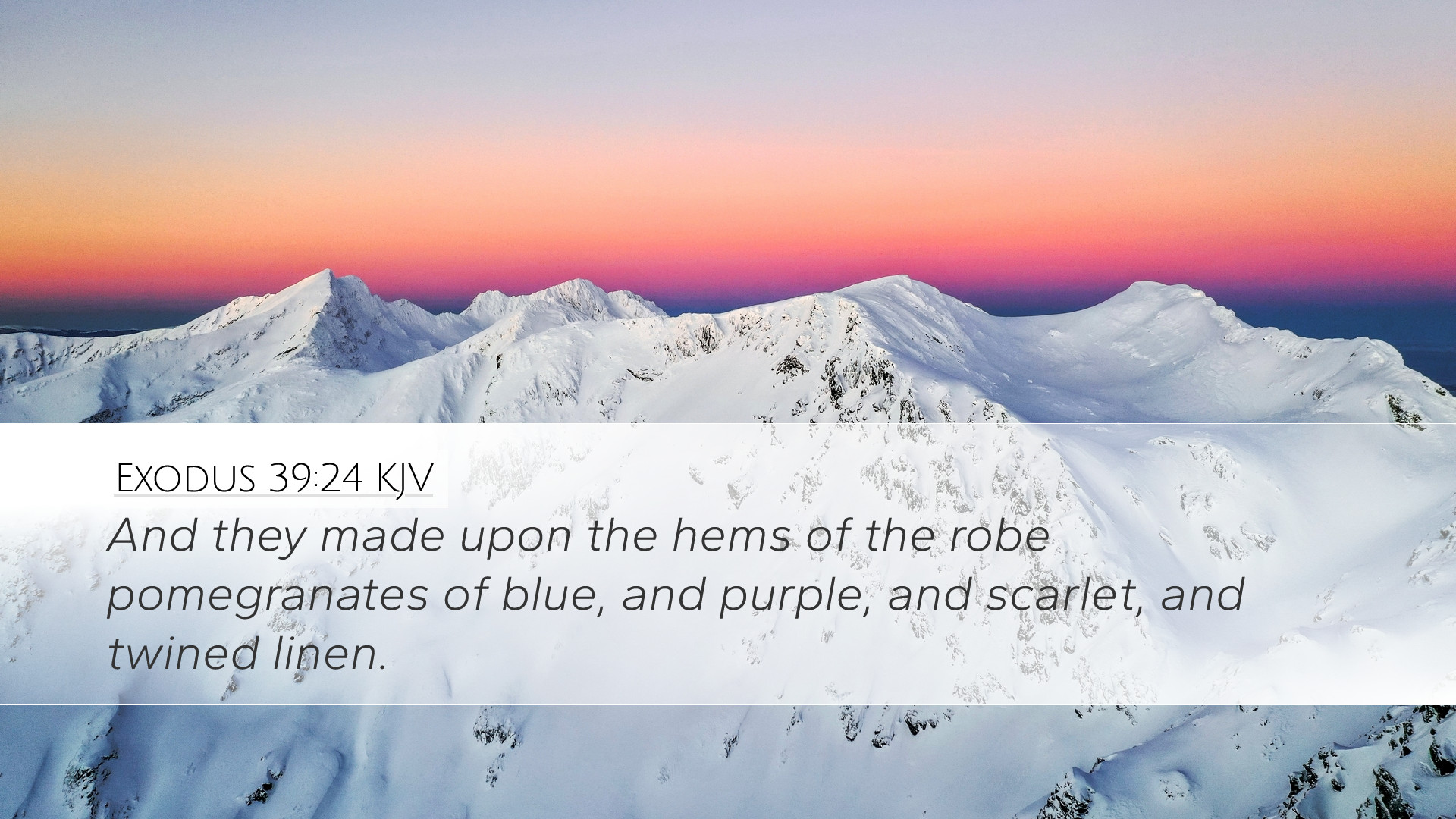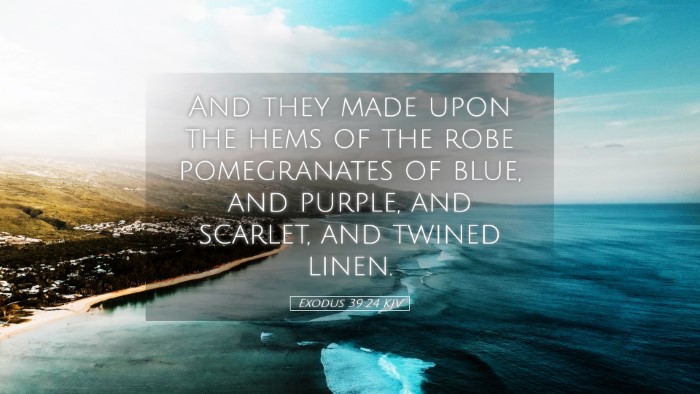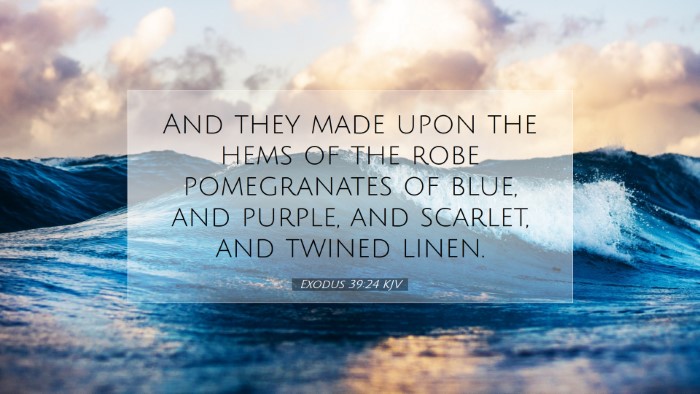Commentary on Exodus 39:24
Verse: "And they made upon the hems of the robe pomegranates of blue, and purple, and scarlet, and twined linen." - Exodus 39:24
Introduction
This verse is part of the detailed description of the garments worn by the high priest of Israel, particularly the robe. The inclusion of pomegranates signifies various thematic elements in the scriptures, each rich with theological significance. The craftsmanship of the garments reflects not merely physical attire but spiritual truths that lend insight into the nature of worship, holiness, and the role of the priesthood.
The Significance of the Pomegranate
Symbol of Abundance: The pomegranate has traditionally been viewed as a symbol of abundance and fertility. In the context of the high priest's robe, it may represent the blessings that God bestows upon His people. As Matthew Henry indicates, the pomegranates express the idea that God's presence among His people brings forth fruitfulness and growth.
Spiritual Representation: Each pomegranate consists of numerous seeds, paralleling the notion of multiplicity in blessings. Albert Barnes emphasizes that this multitude can also symbolize the multitude of the faithful—those who form the body of Israel. This links to the idea that the priest's role is to intercede for the many before God.
Colors and Materials Used
The use of blue, purple, and scarlet in the making of these pomegranates holds rich significance:
- Blue: Often associated with divinity and the heavenly realm, the color blue serves as a reminder of God's presence and guidance.
- Purple: A color connected to royalty and priesthood, purple signifies the dignity and authority bestowed upon the high priest as one who represents God to the people and vice versa.
- Scarlet: This color evokes thoughts of sacrifice and suffering, intimately tied to the atoning work of Christ in the New Testament, as it brings to light themes of redemption.
Adam Clarke underscores that the intertwining of these colors continues to show the majesty and grandeur of the priestly office, which is ultimately fulfilled in Jesus Christ, our high priest.
The Hems of the Robe
The specific mention of the "hems of the robe" points toward the details in the design of the garments, illustrating the importance of aesthetics in worship. Worship is to be approached with reverence and beauty, symbolizing the glory of God. Henry notes that every aspect of the sacred garments was meant to reflect God's holiness and the dignity of His service.
Connection to Worship and Holiness
The design of the high priest's garments was not merely for the sake of beauty but was liturgically significant. The pomegranates were not just ornamental but served as a reminder of the vibrant life that comes from God. They were part of the overall attire that distinguished the high priest's role, reinforcing the notion that worship demands purity, separateness, and a deep respect for God's holiness.
Barnes points out that the pomegranate motif emphasizes the overflow of joy in divine worship, echoing the heart's rejoicing in God's presence.
Lessons for Pastors and Theologians
For pastors and theologians, this passage offers a rich tapestry of insights. The careful attention to detail in the high priest's garments invites leaders in the church to consider the significance of their own conduct and attire in leading worship. Are we leading with an understanding of the sacred nature of our calling?
The pomegranates can serve as a metaphor for the fruitfulness expected in ministry. Just as the high priest represented the people before God, so too are church leaders called to be intercessors, bearing the weight of their congregation's spiritual well-being.
Conclusion
Exodus 39:24 propels readers into a deeper contemplation of God's intentions through the symbolism of the garments worn by the high priest. The inclusion of pomegranates amidst the blue, purple, and scarlet threads provides layers of meaning that relate directly to God's covenant with His people, the abundance of grace, and the role of intercession in worship.
By understanding the depths of such passages, pastors, students, and scholars can continue to explore the nature of God’s holiness and the profound implications it has for worship and community life.


